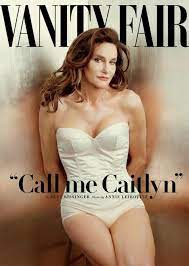A Look Back:
The Problems Facing America in 2008

To give my immune system an extra challenge last week, I caught a cold. So, between the energy needed to defeat that and the energy needed to repair all the damaged tissue around the knee, I’ve been sleeping most of the time I normally work. Thus, this issue, and possibly the next, will be a look back at some things I wrote about years ago.
I’m starting with this little piece, in which I worried about some of the major problems facing America back then. Reading it now, I’m 80% discouraged, but 20% hopeful.
Discouraged because every problem I cited (including being involved in an expensive proxy war) has gotten worse. Hopeful because America is still alive and kicking and may be able to make it through the madness once again.
Let me know what you think…
From Early to Rise, October 31, 2008
Several of my golfing buddies are worried that the American Empire is crumbling.
Every day, we wake up to news that signals its demise. Soaring debt, collapsing financial institutions, looming climate change, hurricanes that wipe out entire cities, decaying public infrastructure, healthcare that is the worst among the developed nations, an unnecessary war that is costing us billions – and a government that has been telling us that if we just keep buying consumer goods with our credit cards, all will be fine.
And what are we doing about it? Our economists are arguing about economic theory. Political candidates are shouting slogans at one another. Our representatives in Washington are bailing out big businesses by asking us to pay for their greed.
For more than two decades, Americans have been getting poorer, not richer. Since World War II, America has been involved in unnecessary wars that have killed hundreds of thousands of our young people, cost us trillions of dollars, and have benefited only the war industry that was, before World War II, non-existent.
We are told we can’t afford to provide basic healthcare to our poor, and yet we spend hundreds of billions of dollars bailing out big banks and insurance companies that went bust because they gave in to greed. And they were helped along the way by the federal government urging us to spend, spend, spend!
The problem is not with most of the American people, who are as hardworking, industrious, and bighearted as ever. The problem is that big government has made a devious plot with big business. And the two, working closely together, are duping Americans into continuing to spend money they don’t have for causes that were invented purely and simply to take advantage of our big hearts.
We are probably already too far down the slippery slope of an economic landslide to prevent a depression. We have only one hope for survival. As we live through these next five to 10 years, working harder and getting poorer and paying more taxes to pay past government bills, we must remember to trust neither our government nor our largest corporations.
The salvation will not come from the government. Or from the huge industries that are lining up with the government right now. Their goal is to make Americans dependent on them for everything, from earning a living, to healthcare and safety, to planning meals, and taking vacations, and even to what they read in their magazines and newspapers and watch on TV or the internet.
And they will work in lockstep with the public education industry and the government-military complex to make sure that most Americans and their children are happy about becoming wards of the State.
I don’t know if there could be a political solution to this. Politicians want to get elected. And getting elected is much easier if you promise to give the electorate everything they want and everything they think they need, from the government or huge companies aligned with the government, for free.
If there is any salvation it will be in the diligence and productivity of individual Americans who will, despite the worst sorts of external conditions, continue to work hard and smart to protect and care for their families and themselves.











